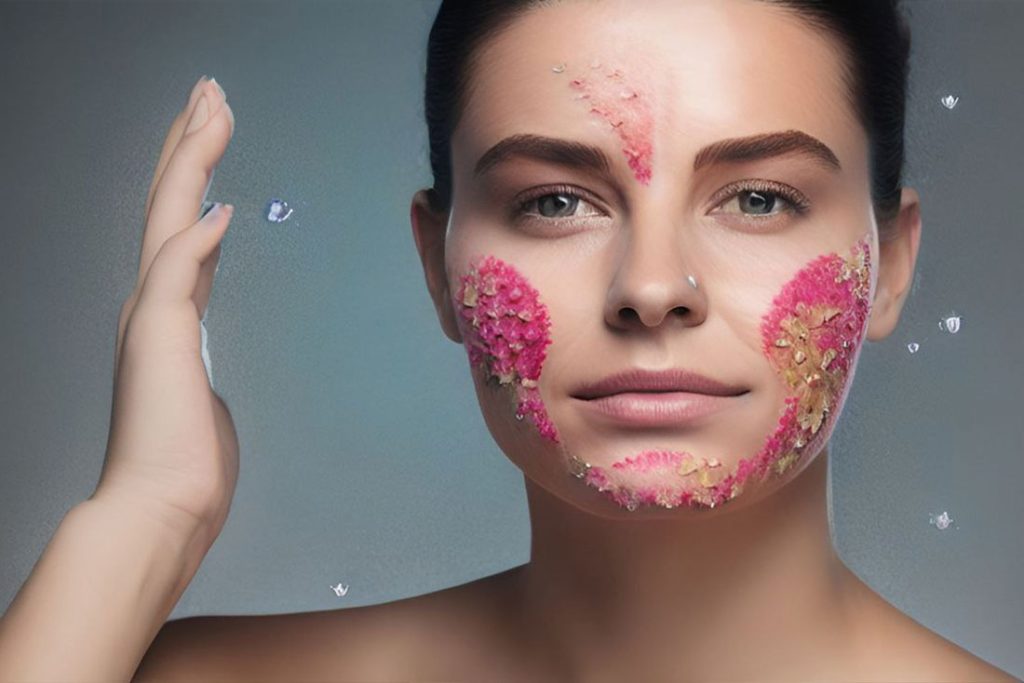Navigating Dermatitis in Cosmetology: An In-Depth Exploration
As skin health professionals, cosmetologists are often called upon to handle various skin conditions, with dermatitis being one of the most commonly encountered. Dermatitis, a term for inflammation of the skin, presents unique challenges and responsibilities in the field of cosmetology. This comprehensive guide aims to provide a thorough understanding of dermatitis from a cosmetologist’s perspective, examining the many forms it can take and discussing the best practices for managing it within the scope of cosmetology.

Dermatitis
Understanding Dermatitis
Dermatitis is a broad term that encompasses several distinct conditions, all of which involve inflammation of the skin. These conditions can take multiple forms and present varying symptoms, including itchiness, redness, swelling, and the formation of lesions such as eczema, vesicles, or papules. Dermatitis can occur due to numerous triggers, including allergens, irritants, or genetic factors, and it can affect any part of the body.
The numerous forms of dermatitis include:
- Contact Dermatitis: This type arises due to direct contact with allergens or irritants such as certain plants, cosmetics, soaps, or jewelry.
- Atopic Dermatitis (Eczema): Often genetically linked, this chronic condition is characterized by itchy, scaly patches, often occurring in conjunction with other atopic conditions like asthma or hay fever.
- Seborrheic Dermatitis: This form is often associated with oily areas of the skin and can lead to redness, yellowish scales, and stubborn dandruff.
The Role of Cosmetologists in Identifying and Managing Dermatitis
While cosmetologists are not medical professionals and cannot diagnose skin conditions, they play an essential role in the early identification of dermatitis. By recognizing the signs and symptoms of dermatitis, they can guide clients towards seeking professional medical attention and avoiding further exacerbation of their condition.
In the cosmetology setting, management of dermatitis primarily involves the avoidance of irritants that could worsen the condition. As skincare professionals, cosmetologists should be adept at selecting products that are gentle on the skin, hypoallergenic, and free of common irritants. They can also educate clients on skincare practices that help manage dermatitis, such as regular moisturizing, avoiding scratching, and reducing exposure to irritants.
Professional Boundaries and Referral Guidelines
While a cosmetologist’s expertise is invaluable in the management of dermatitis, it’s crucial to understand and respect professional boundaries. If a client exhibits signs of dermatitis, cosmetologists should recommend that they consult a healthcare professional for an appropriate diagnosis and treatment plan.
Moreover, cosmetologists should continually expand their knowledge and understanding of skin conditions like dermatitis. Regular participation in continuing education programs, workshops, and professional conferences can help stay abreast of the latest research and developments in the field.
Dermatitis is a prevalent condition that cosmetologists regularly face in their practice. Their unique position allows them to play an instrumental role in its early identification and management. By staying informed and respecting professional boundaries, cosmetologists can provide their clients with the best possible care, helping them maintain healthy and radiant skin.






